

FIIO UTWS5 Review and comparison
FiiO’s wheels never stop spinning, as if they’re racing down the highway at high speed. They seem to be in constant new device launch mode as soon as you watch them introduce a new product.
In the past six months, they have released BTA30 PRO, FH9, FD7, FA7s, KA3, etc. Do you understand what I’m talking about? Oh, I’m not complaining, and don’t get me wrong.
Why complain when things are getting better and better, sometimes even by a significant margin? In fact, this is a good introduction to a new FiiO product that I have seen has already taken off and is selling fast from the shelves.
We’re talking about the new FiiO UTWS5, and it looks like it got a few tweaks and improvements under the hood. New spark plugs plus oil change. Let’s kick the tires and go.
FIIO UTWS5 MAIN SPECIFICATIONS
The audio engine in FiiO UTWS5 has been redesigned: FiiO has replaced the main driving components with more modern and modernized ones.
For example, the internals of UTWS3 consist of an SoC chipset in a VFBGA package with an additional amplifier section, but UTWS5 has an independent DAC section with an updated SoC, which has better performance and updated upgraded standards.
FiiO UTWS5 has an independent DAC section and uses the AKM Velvet Sound AK4332 WLCSP package separately from the Bluetooth chip, which has also been upgraded.
This time, FiiO has used the more advanced Qualcomm QCC5141, bringing the UTWS5 up to the Bluetooth 5.2 standard. Qualcomm classifies this chip as a premium single-chip solution specifically designed for low-power headphones.
FIIO UTWS5 CODECS
Most common Bluetooth formats can run on FiiO UTWS5 starting with basic SBC, AAC aptX plus aptX low latency and Adaptive which should make UTWS5 work on any device you might have and as mentioned through backward compatible transmission Bluetooth 5.2.
I would prefer and wish to have LDAC capability, but currently, the QCC5141 chip does not support it. Whether it will be added depends on Qualcomm and SONY, not FiiO. However, as FiiO has found out, UTWS5 will support the LHDC codec through an upcoming firmware update.
If this firmware comes out soon and fixes some other issues, that would be great, but don’t quote me or expect it all to come out in one fell swoop. At the moment it’s just wishful thinking. Or maybe they will include LDAC in their next model, maybe UTWS7? Only FiiO knows.
You May Like: Best Bluetooth Speaker for Your Phone
FIIO UTWS5 DESIGN
If you’ve seen the UTWS3, then you know what the UTWS5 looks like because not much has changed, except for the golden hue of the FiiO logo on the stand and on the dongles themselves.
Both cradles are the same size, made from the same materials inside and out, and the dongles look identical, and I’m willing to bet that if you look at them from the back, you can’t tell them apart until you look at the front where the gold is. the FiiO logo, which is the only difference.
The IPX4-rated UTWS5 dongles are non-touch and use the same button settings as the UTWS3, which I’m quite happy with because, to be honest, they work really well for me. I often encounter poorly implemented touch controls that are sometimes unresponsive and frustrating. The push button system always works.
This first iteration was released with MMCX connectors, but FiiO has stated that .78mm connectors are on the way and will be released soon. In particular, this model is equipped with MMCX connectors, and they lock very well, so much so that you have to use a tool to push the connectors apart.
FIIO UTWS5 MICROPHONE SYSTEM
The FiiO UTWS5 uses aptX 32kHz voice system and a dual microphone that also doubles to call voice command services. It also uses ECNS technology to keep your voice clear and audible over ambient noise.
I found the voice quality of these headphones to be very good. They seem to be very effective at picking up your voice while avoiding outside noise, but only up to a point. I never had to raise my voice to be heard.
The microphone system, together with the 5141’s mirroring technology, is excellent for mobile hands-free calling. I have personally used UTWS5 individually with great results.
Left and right sound is combined into mono when you use one earbud at a time, but I found that mic capture works better when you use both earbuds. I think the extra microphones help a lot.
FIIO UTWS5 COMFORT AND ISOLATION
One of the downsides of these types of headphones is that none of them have ANC and you have to rely on the passive noise cancellation of the IEMs and rubber tips used.
In terms of comfort, you feel the loop like a regular wire loop, but with a slightly thicker circumference, and they feel quite comfortable. I think IEM comfort will be more noticeable in UTWS5.
Once I forgot I was wearing them and walked around the house with one earbud for several hours, so it’s safe to say that they are comfortable enough for daily and long-term use.
FIIO UTWS5 STAND AND LIFE
The UTWS5 cradle is quite large compared to, for example, the regular TWS model, but it must be so because its contents are physically larger and there is no way to do this. The outer shell of the cradle is aluminum and the rest is a polymer with an internal rubber pad that protects the contents and those expensive IEMs you plan to use.
The stand has a built-in 800mAh battery that FiiO says can provide up to 30 hours of battery life. I got seven hours on each charge from the dongles plus four full charges from the stand. FiiO claims eight hours, but seven is enough for me.
Charging is via the rear USB-C port or via wireless charging, however, I noticed the absence of any form of fast charging. On average, for every minute spent on the charger, the device is charged by just over 1%, and it takes about an hour and a half to fully charge from zero to full charge.
FIIO UTWS5 SOFTWARE
However, I found a caveat here that FiiO should look into, or maybe they already do. The UTWS3 shows an equalizer, but after connecting the UTWS5, the equalizer disappears as an option and you are left with a set of low-pass filters that, in my opinion, do absolutely nothing.
Perhaps FiiO wants users to be puritans and not use the EQ, since the chip and DAC section are considered Hi-Res, but I doubt that is the reason for the lack of an EQ.
FIIO UTWS5 PACKAGING AND ACCESSORIES
Can I quote James Franco and the movie “The Interview” when he says “same but different”. The size and shape of the package is the same as the UTWS3, but it is done in a different color scheme, but that’s it.
The contents of the package are the same, and the accessories are also the same. You get a quick start guide, a product tips brochure, and a warranty authentication brochure. You also get a foot-long USB charging cable, but no charger.
The only thing I was missing was the MMCX removal tool that came with their IEM, but not with this unit. Since the MMCX connector uses a compression type of connector, it is firmly attached and difficult to detach by hand alone.
FIIO UTWS5 SOUND EXPERIENCES
FIIO UTWS5 SUMMARY
FiiO UTWS5, compared to the previous model, seems to have good instrument clarity and better decoupling of elements. The new equipment seems to be more determined and clear-sounding.
The frequency response has decent extension on both sides and good frequency balance with a hint of brightness. UTWS sounds more analytical than the previous UTWS3. The bass response seems to be recessed below 30 Hz. High frequencies slowly drop above 1 kHz.
One of the good things about the UTWS5 that probably worries everyone is the amount of hiss it produces, and FiiO seems to have done a good job of keeping the noise level low enough not to be audible.
The transient response also seems pretty good, but the overall response feels controlled and composed and seems to retain a very natural character.
FIIO UTWS5 SOUND STAGE Small stage sizes
are becoming more and more popular these days, and far-reaching features are being abandoned in favor of smaller and more personal spaces, but better placement is required. To some extent, UTWS5 does just that.
The width is somewhat average, there is some projection of the height, but I feel that the depth is reduced or in this case replaced by a wider panorama.
The overall stage seems wide and quite high, but the frontal depth seems shallow, bringing the vocals closer to the listener. Sometimes this character is preferred, but not when the recording calls for a deep frontal scene.
FIIO UTWS5 POWER OUTPUT
Let’s face it. At nominal power levels, audible differences are negligible and barely noticeable. The output power is sufficient for efficient IEMs, and FiiO recommends using these dongles with IEMs that do not exceed 100 ohms, which covers most models.
Rated output power is listed as 54mW into 16 ohms and 33mW into 32 ohms, and while it exceeds the UTWS3’s maximum output power of 38mW, don’t expect ground-shaking power.
UTWS5
is one of the easiest headsets to pair when compared to the UTWS3 or the first model, and even better than most TWS I’ve tested so far. After the initial pairing, they connect almost instantly, and this is thanks to the implementation of 5.2 and one of the advantages of 5.2.
The initial pairing is done using the button method. There is a button on the front and inside the case that is visible once you open the kickstand. Press and hold it for 3 seconds to enter pairing mode.
STABILITY AND RANGE
After an easy initial pairing procedure, the UTWS5 locks into place securely. I have never experienced any disconnects when I was within range of these dongles.
Long-range reception was very good, and you can expect to be over 40 feet from the source, and if it’s in line of sight, probably even farther.
I used the UTWS5 mostly with the FiiO BTA30 and got almost full coverage of the house except for the bathroom which is at the back of the house, but the BTA30 stayed in the living room and I’m sure if I had placed it in a more central location I could to wander around the house all day without wires and not miss a beat.
STABILITY
Since UTWS5 can run in aptX low latency mode, this means the latency is less than 40 milliseconds on paper, and that seems to be the case with UTWS5. I barely felt the difference in latency, and at times it felt like I was connected to a wired connection.
Can you successfully play with UTWS5? I would say yes, provided that your gaming session does not exceed 6 hours. You will be very upset if you run out of battery amid a heated battle, so be sure to charge your battery before spawning.
FIIO UTWS3 ($80) vs FIIO UTWS5
TECHNOLOGY
So, the most important question is this. Is the FiiO UTWS3 hardware outdated? The short answer is no. This dongle runs on Bluetooth 5.0, uses the same codec registry, and is essentially cut from the same cookie.
The Qualcomm QCC3020 has been superseded and is considered obsolete technology and yes the QCC5141 is better but the 3020 still has a lot of life until something better comes along. But since this is an already established base SoC chip, compatibility is guaranteed to a greater extent than on newer chips, plus all the bugs have already been worked out.
I can give an example. Both of these models use the same FiiO Control app, but only the UTWS3 has the EQ feature enabled, while the UTWS5 lacks it. It appears to be something overlooked and perhaps FiiO will fix this later with a firmware update.
DESIGN
Again, if it wasn’t for the gold accents, you wouldn’t be able to tell the two devices apart. The charging cradles are the same size, weight, battery capacity, and frankly, I think they are the same cradle.
Same buttons, same hook design, same materials, same connectors, same charging pins, you get the idea.
In passing, we note that some UTWS3 users have had problems with the gold-plated charging contacts, and FiiO recommends that users clean these contacts often, otherwise, they may stop working and charging. I hope this doesn’t happen with UTWS5, but I got a warning screen in the FiiO control app telling me to clean the contacts on UTWS5 frequently.
PERFORMANCE
Going from the UTWS3 to the UTWS5 there is a clearing effect and the veil seems to be less, but there is a trade off in that the UTWS3 sounded warmer and the 5th seems more clinical with more clarity.
The UTWS5 also seems to have a slightly lower noise floor, a darker background, and presents the sound with the least amount of hiss. Perhaps the UTWS5 has a couple of decibels more dynamic range, but this may be due to the darker background.
But on the other hand, UTWS3 seems to be warmer, and makes me sound crazy, but, in my opinion, it sounds more musical. For some reason, the low frequencies sound fuller, and the mids recede a little. Please don’t shoot me. I have many more reviews.
Another compromise was reached on the sound stage. UTWS5 seems wider and taller, and better positioned, but it lacks depth. UTWS3 are narrower and shorter, the scene seems smaller, but they feel more individual, with a better ability to project farther in terms of depth.
TECHNIQUE
The iBasso CF01 has more in common with the UTWS3 than with the UTWS5, but visually it’s impossible to mix them up. They both use Qualcomm QCC3020 and an additional amplifier stage inside.
Another common feature is that they both work on the Bluetooth 5.0 standard, although UTWS3 has better long-range reception, and UTWS5 is even better because it works on 5.2.
DESIGN
The aluminum that these dongles are made from may affect the Bluetooth range. They have an insulated twisted silver wire with an MMCX connector on the output connection, but the FiiO design looks more polished and modern as they use single crystal silver plated copper wire and wrap it in a decorative sheath that blends in with the dongle design.
Similarly, but not the same, the button system for accessing volume, skipping tracks, etc. is implemented, which I prefer sometimes instead of touch controls. The CF01’s buttons are on the top, which may be preferable to the FiiO’s side buttons. Or perhaps the larger buttons on FiiO are more suitable for you. It’s all about personal taste here.
The CF01 charging cradle is larger than the FiiO models, but not much heavier. However, size wouldn’t be an issue if you got the bonus of a bigger battery, but that’s not the case here. The CF01 has a battery life of 20 hours, while the dongles have 4.5 hours.
PERFORMANCE
If you have a less sensitive IEM, then you might like the iBasso CF01 better for several reasons. First, it plays louder and seems to have a higher power output, which explains to some extent why the CF01’s battery performance is degraded.
Secondly, the sound seems brighter, and sharper, with good dynamics and frequency extension, but the noise floor of the CF01 is much higher, especially with regard to hiss. I would also conclude that the overall soundscape is better and seems wider and more precise on the CF01, but not by a huge margin.
However, of the three dongles, only the UTWS3 has EQ software, and it’s the only one with a custom sound signature. iBasso CF01 doesn’t have any app and so far it’s not even featured on their main site.
In my opinion, FiiO UTWS5 is more of an upgrade than an upgrade, so if you have a UTWS3 there is no need to run out and buy a UTWS5. However, it will be a good first purchase, offering upgraded BT5.2 hardware and excellent stability.
Yes, it has more clarity, brightness, and perhaps a broader soundscape than UTWS3, but it runs on the same codec, however, in my opinion, it came at a price with a loss of depth, warmth, and musicality.
I think buyers should ask themselves if they are comfortable with a more analytical nature or if they prefer a warmer, more musical feel. Would I trade that for better transmission range, stability with slightly higher sampling, and bit depth?
FiiO UTWS5 is a small step forward that can be improved with the addition of the LHDC codec and an equalizer fix. If that can be done and maybe add LDAC, then this dongle will be head and shoulders above the rest. As it stands, it’s just good overall, but it’s not a giant leap forward.
SPECIFICATIONS FIIO UTWS5
- Weight 122 grams including ear hooks
- Bluetooth 5.2 AAC/SBC/aptX/aptX Adaptive
- Sampling frequency 96 kHz – 24-bit
- Hardware DAC – AK4332 / BT – QCC5141
- Recommended impedance 16 to 100 ohms
- Output Power: 54mW @ 16Ω / 33mW @ 32Ω
- Noise threshold: less than 2uV
- Frequency response 10 Hz to 41 kHz
- Output impedance 4Ω
- Channel separation 86 dB @ 1 kHz / 32Ω
- SNR 109 dB
- Peak output voltage 9Vp-p
- Power input DC5V 1A or above
- Charging time Ear hooks -1.5 hours / Charging case -2 hours
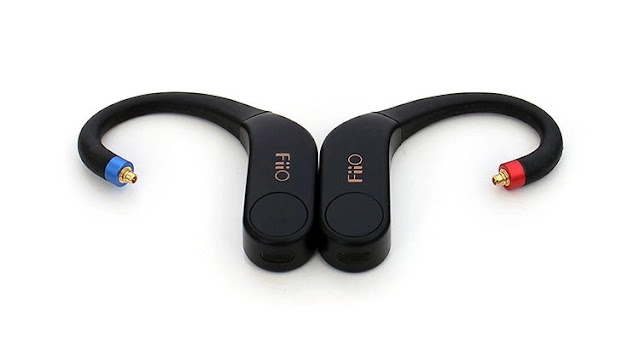
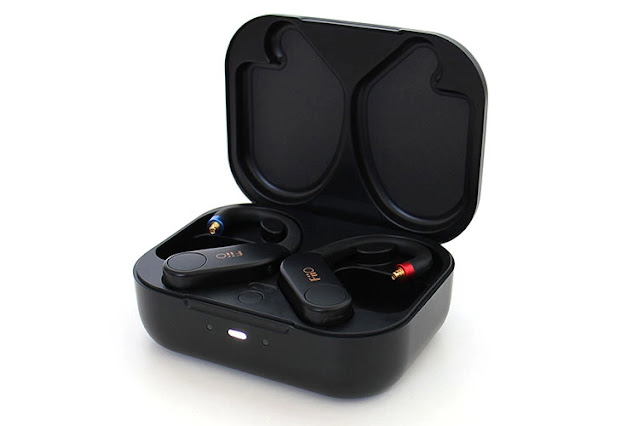
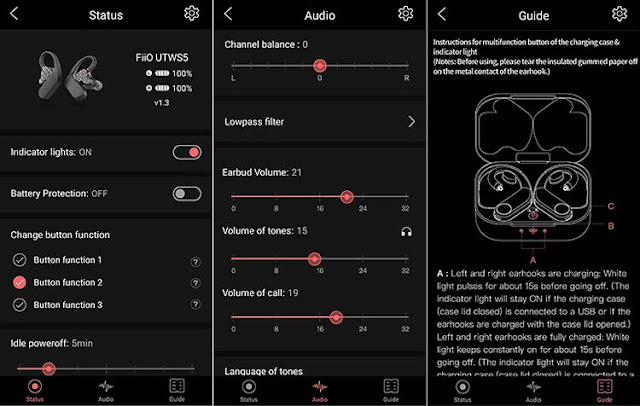
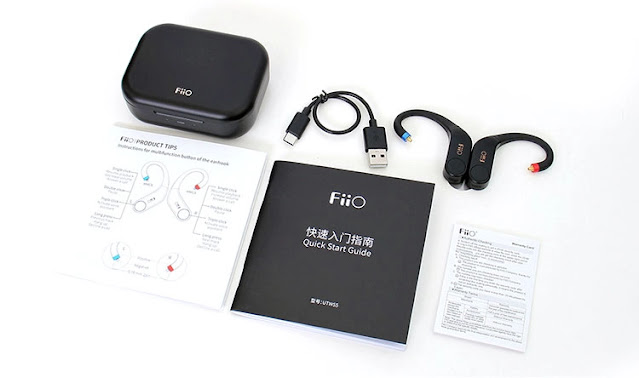
.webp)
.jpg)
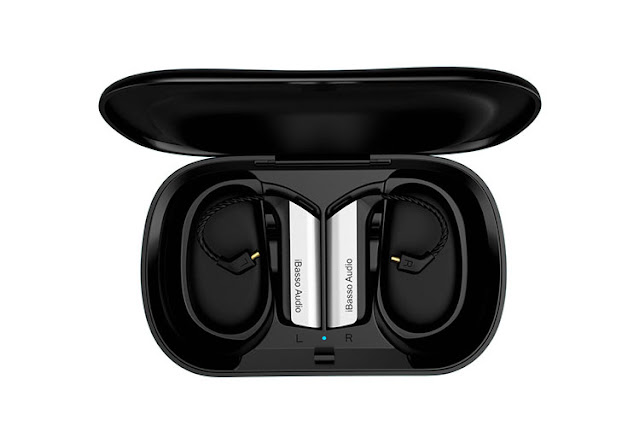



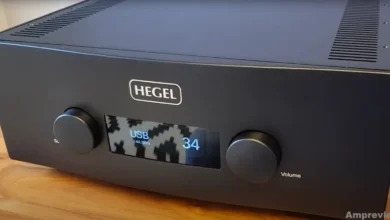
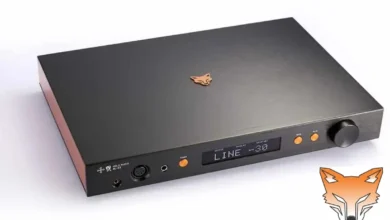
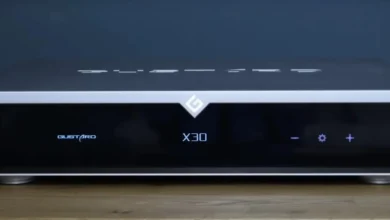
GIPHY App Key not set. Please check settings